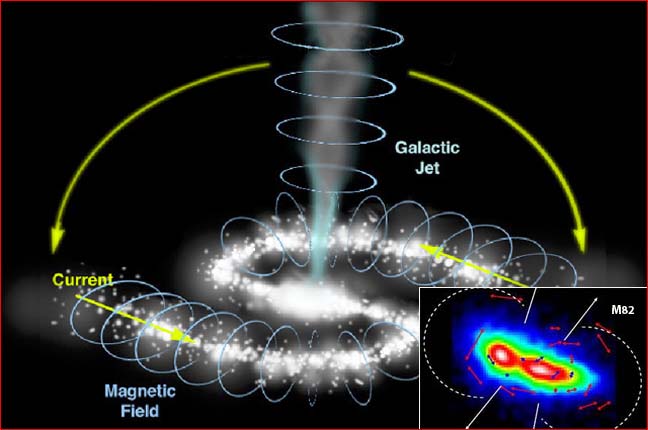(PhysOrg.com) -- Physicists have predicted that under the influence of sufficiently high electric fields, liquid droplets of certain materials will undergo solidification, forming crystallites at temperature and pressure conditions that correspond to liquid droplets at field-free conditions. This electric-field-induced phase transformation is termed electrocrystallization.
Ads by Google
OneNet Cloud Computing - Scalable cloud computing & hosted IT services for NZ bus - Learn More -
www.OneNet.co.nz
The study, performed by scientists at the Georgia Institute of Technology, appears online and is scheduled as a feature and cover article in the 42nd issue of Volume 115 of the Journal of Physical Chemistry C.
“We show that with a strong electric field, you can induce a phase transition without altering the thermodynamic parameters,” said Uzi Landman, Regents’ and Institute Professor in the School of Physics, F.E. Callaway Chair and director of the Center for Computational Materials Science (CCMS) at Georgia Tech.
In these simulations, Landman and Senior Research Scientists David Luedtke and Jianping Gao at the CCMS set out first to explore a phenomenon described by Sir Geoffrey Ingram Taylor in 1964 in the course of his study of the effect of lightning on raindrops, expressed as changes in the shape of liquid drops when passing through an electric field. While liquid drops under field-free conditions are spherical, they alter their shape in response to an applied electric field to become needle-like liquid drops. Instead of the water droplets used in the almost decade-old laboratory experiments of Taylor, the Georgia Tech researchers focused their theoretical study on a 10 nanometer (nm) diameter liquid droplet of formamide, which is a material made of small polar molecules each characterized by a dipole moment that is more than twice as large as that of a water molecule.
With the use of molecular dynamics simulations developed at the CCMS, which allow scientists to track the evolution of materials systems with ultra-high resolution in space and time, the physicists explored the response of the formamide nano-droplet to an applied electric field of variable strength. Influenced by a field of less than 0.5V/nm, the spherical droplet elongated only slightly. However, when the strength of the field was raised to a critical value close to 0.5 V/nm, the simulated droplet was found to undergo a shape transition resulting in a needle-like liquid droplet with its long axis – oriented along the direction of the applied field – measuring about 12 times larger than the perpendicular (cross-sectional) small axis of the needle-like droplet. The value of the critical field found in the simulations agrees well with the prediction obtained almost half a decade ago by Taylor from general macroscopic considerations.
Ads by Google
IBM Predictive Analytics - No More Guesswork with Analytics. Learn More in IBM's 2 Min SPSS Demo -
www.ibm.com
Past the shape transition further increase of the applied electric field yielded a slow, gradual increase of the aspect ratio between the long and short axes of the needle-like droplet, with the formamide molecules exhibiting liquid diffusional motions.
“Here came the Eureka moment,” said Landman. “When the field strength in the simulations was ramped up even further, reaching a value close to 1.5V/nm, the liquid needle underwent a solidification phase transition, exhibited by freezing of the diffusional motion, and culminating in the formation of a formamide single crystal characterized by a structure that differs from that of the x-ray crystallographic one determined years ago under zero-field conditions. Now, who ordered that?” he added.
Further analysis has shown that the crystallization transition involved arrangement of the molecules into a particular spatial ordered lattice, which optimizes the interactions between the positive and negative ends of the dipoles of neighboring molecules, resulting in minimization of the free energy of the resulting rigid crystalline needle. When the electric field applied to the droplet was subsequently decreased, the crystalline needle remelted and at zero-field the liquid droplet reverted to a spherical shape. The field reversal process was found to exhibit a hysteresis.
Analysis of the microscopic structural changes that underlie the response of the droplet to the applied field revealed that accompanying the shape transition at 0.5 V/nm is a sharp increase in the degree of reorientation of the molecular electric dipoles, which after the transition lie preferentially along the direction of the applied electric field and coincide with the long axis of the needle-like liquid droplet. The directional dipole reorientation, which is essentially complete subsequent to the higher field electrocrystallization transition, breaks the symmetry and transforms the droplet into a field-induced ferroelectric state where it possesses a large net electric dipole, in contrast to its unpolarized state at zero–field conditions.
Along with the large-scale atomistic computer simulations, researchers formulated and evaluated an analytical free-energy model, which describes the balance between the polarization, interfacial tension and dielectric saturation contributions. This model was shown to yield results in agreement with the computer simulation experiments, thus providing a theoretical framework for understanding the response of dielectric droplets to applied fields.
“This investigation unveiled fascinating properties of a large group of materials under the influence of applied fields,” Landman said. “Here the field-induced shape and crystallization transitions occurred because formamide, like water and many other materials, is characterized by a relatively large electric dipole moment. The study demonstrated the ability to employ external fields to direct and control the shape, the aggregation phase (that is, solid or liquid) and the properties of certain materials.”
Along with the fundamental interest in understanding the microscopic origins of materials behavior, this may lead to development of applications of field-induced materials control in diverse areas, ranging from targeted drug delivery, nanoencapsulation, printing of nanostructures and surface patterning, to aerosol science, electrospray propulsion and environmental science.
Provided by Georgia Institute of Technology (news : web)

